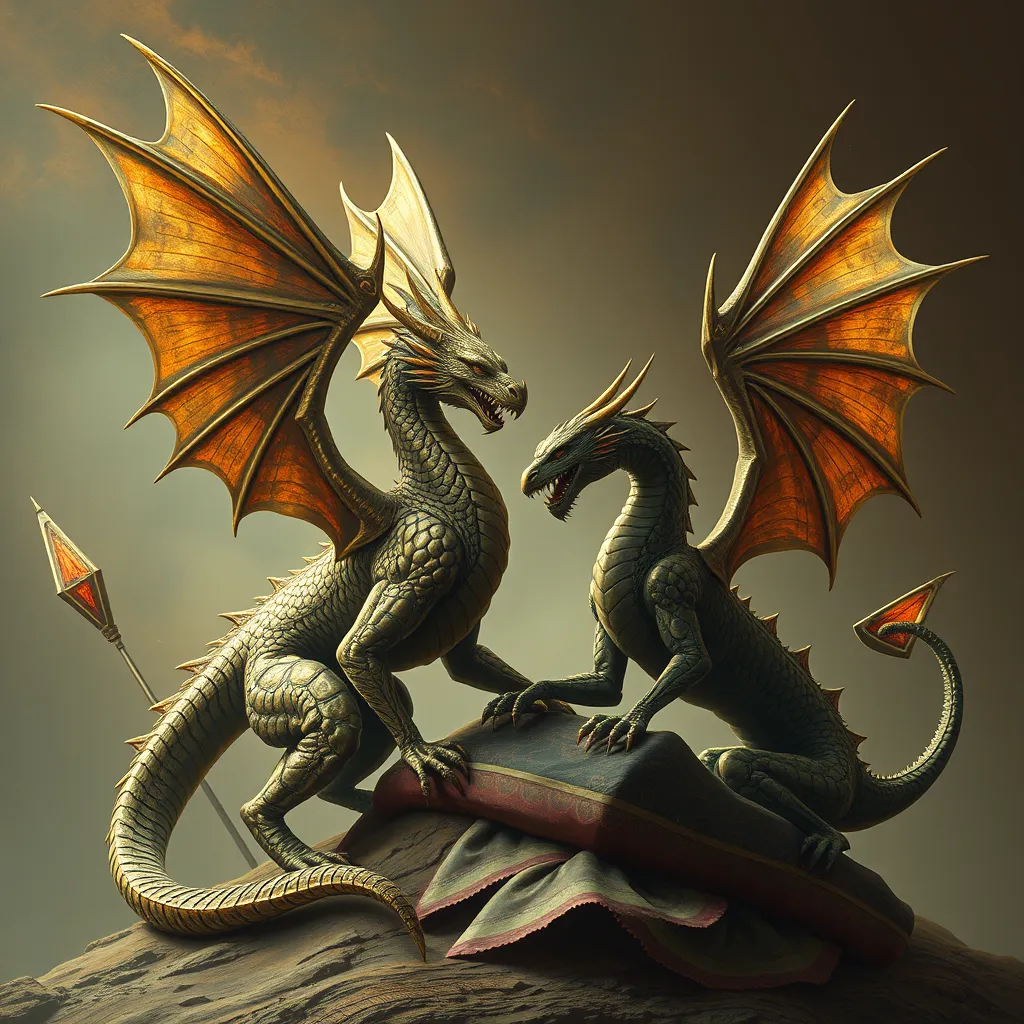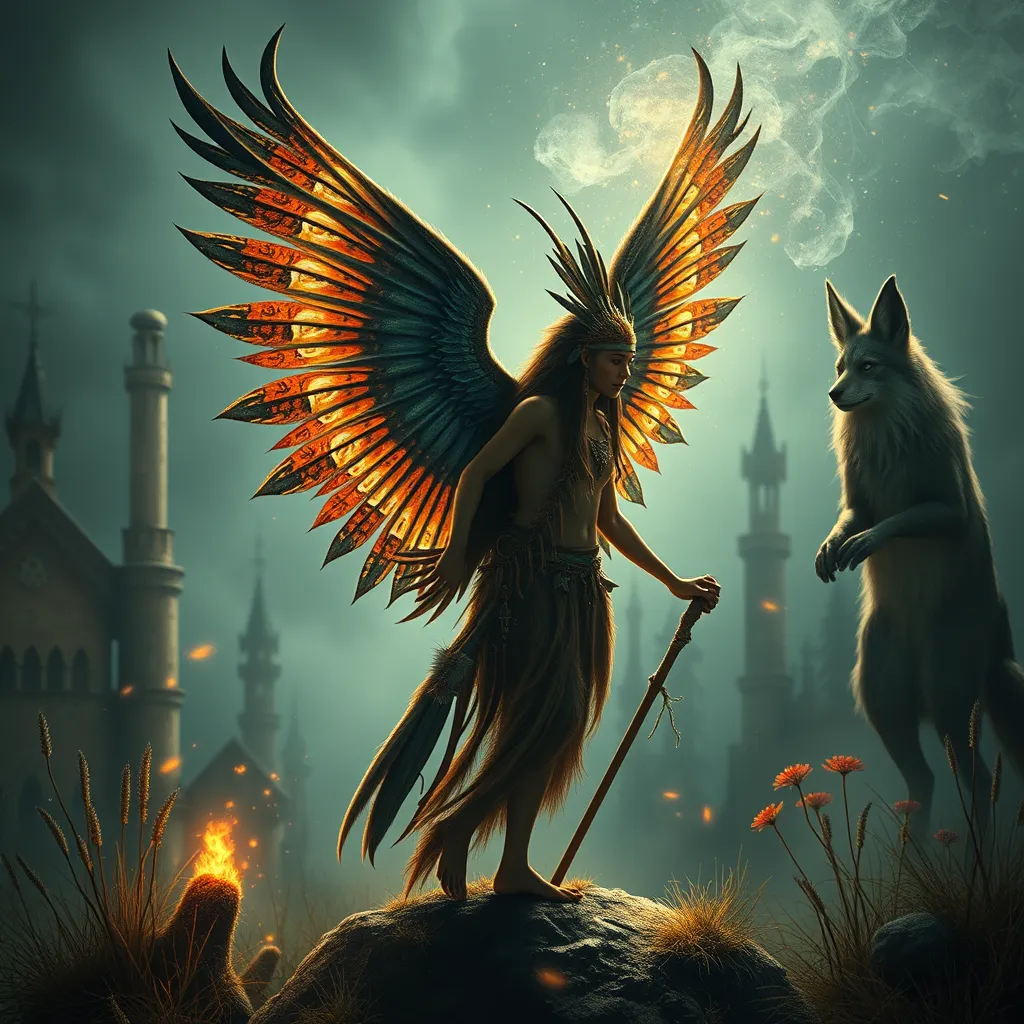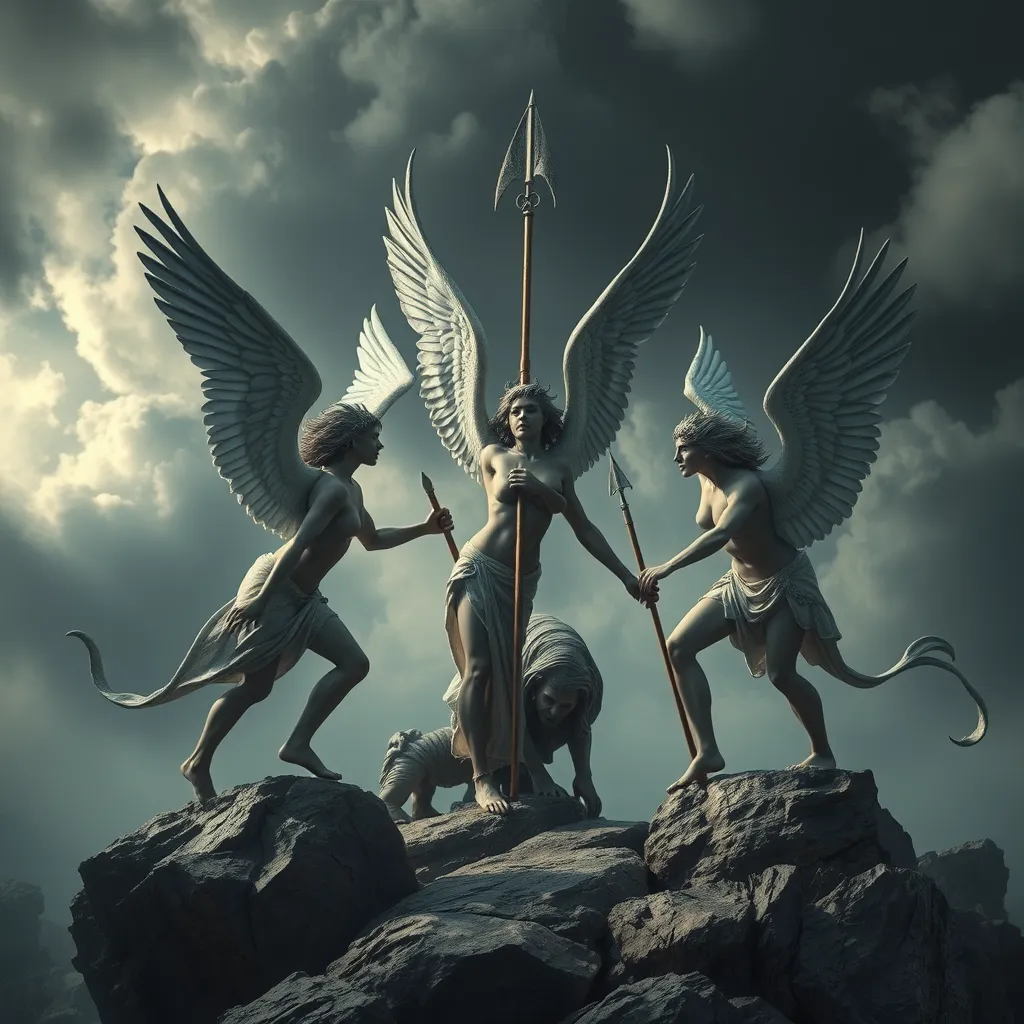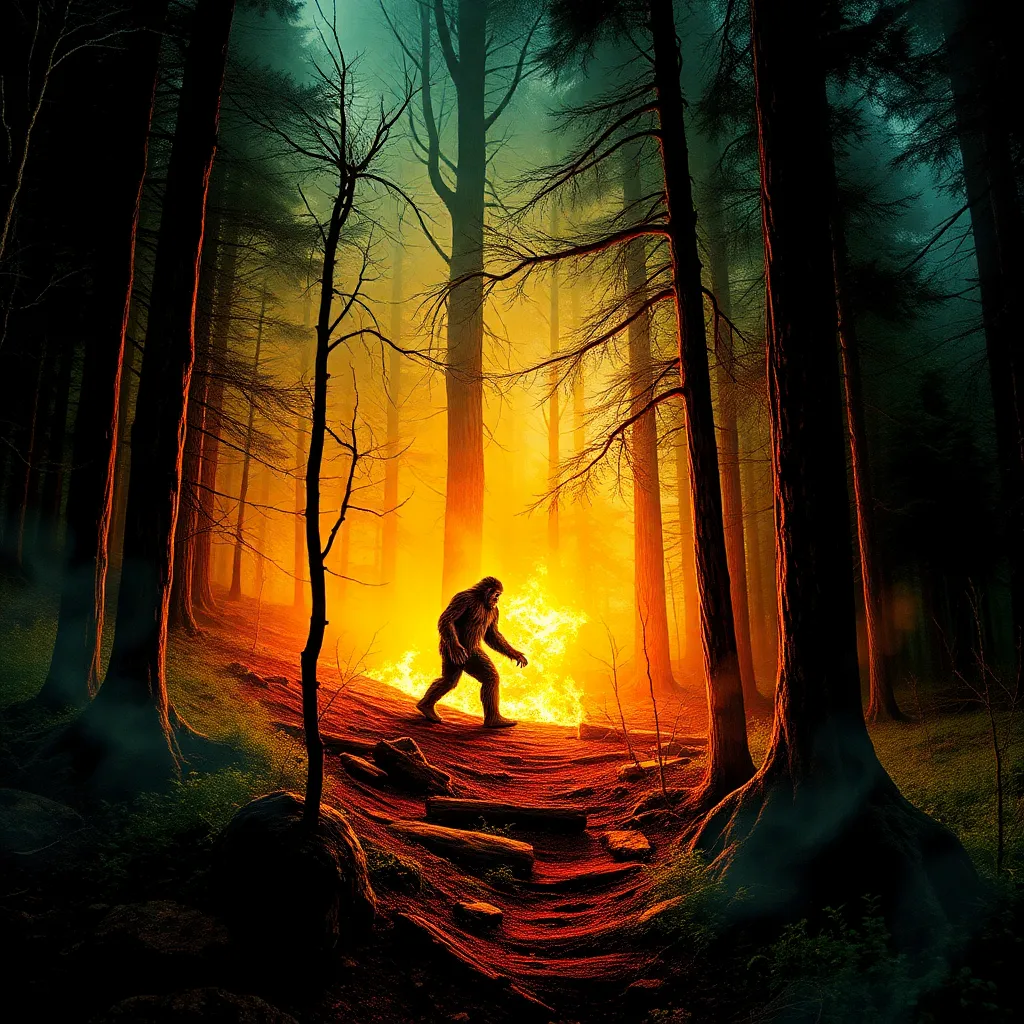The Griffin and the Dragon: A Tale of Ancient Rivals in Babylonian Mythology
I. Introduction
Babylonian mythology is a rich tapestry of narratives that weave together the beliefs, values, and fears of ancient Mesopotamian civilizations. Among the myriad of mythological creatures, two stand out due to their intriguing characteristics and the significant roles they play: the griffin and the dragon. These mythical beings not only symbolize conflicting ideals but also represent the duality of existence in ancient lore. Their rivalry is a recurring theme that encapsulates the struggle between order and chaos, good and evil, making it a prominent part of Babylonian storytelling.
II. The Griffin: Symbolism and Characteristics
The griffin, a creature with the body of a lion and the head and wings of an eagle, is a formidable symbol in Babylonian mythology. This majestic being is often depicted as a guardian, embodying strength, courage, and protective instincts. It is a hybrid creature that combines the qualities of the king of beasts and the king of birds, symbolizing the union of terrestrial and celestial powers.
- Description: The griffin is characterized by its powerful physique, sharp talons, and keen eyesight, representing vigilance and authority.
- Cultural Significance: In Babylonian art and literature, griffins are commonly found in sculptures and carvings, often depicted as protectors of sacred spaces or treasures.
- Role as Guardian: The griffin is often seen as a guardian of the divine and a protector of the innocent, standing against forces that threaten harmony and order.
III. The Dragon: Symbolism and Characteristics
In stark contrast to the griffin, the dragon in Babylonian mythology is often portrayed as a fearsome creature associated with chaos and destruction. With its serpentine body, fearsome claws, and the ability to breathe fire, the dragon embodies the primal forces of nature and the untamed aspects of the human condition.
- Description: Babylonian dragons are depicted as large, scaly creatures, often with multiple limbs, representing power and ferocity.
- Cultural Significance: Dragons in Babylonian art often symbolize chaos and are frequently illustrated in battle scenes, emphasizing their role as antagonists.
- Role as Force of Chaos: The dragon is typically associated with disorder and is often seen as a challenge to the established order, representing the darker aspects of existence.
IV. The Origins of the Rivalry
The rivalry between the griffin and the dragon can be traced back to the early narratives of Babylonian mythology. This conflict mirrors the universal themes of good versus evil, with the griffin representing order and protection, while the dragon embodies chaos and destruction.
- Historical Context: The origins of this rivalry can be linked to the societal struggles of ancient civilizations, where the need for security and the fear of chaos were prevalent.
- Thematic Exploration: The thematic dichotomy of good versus evil is prevalent in their encounters, with the griffin often emerging as the defender of balance.
- Key Myths: Several myths illustrate their conflict, such as the epic battles where the griffin seeks to thwart the dragon’s destructive plans.
V. Major Myths Featuring the Griffin and the Dragon
Numerous Babylonian myths highlight the ongoing conflict between the griffin and the dragon, each serving to reinforce cultural values and beliefs.
- Overview of Notable Myths: Myths such as “The Battle of the Gods” showcase the griffin’s bravery in confronting the dragon to protect the realm.
- Narrative Structure: These tales often follow a classic hero’s journey format, where the griffin embarks on a quest to restore order.
- Impact on Culture: The myths significantly influenced Babylonian culture, reinforcing the idea that order must be defended against chaos.
VI. The Griffin and the Dragon in Modern Interpretation
In contemporary culture, the griffin and the dragon continue to captivate the imagination, often reinterpreted in literature, film, and art.
- Contemporary Perception: Modern interpretations often depict these creatures in fantasy genres, with the griffin symbolizing nobility and the dragon representing a formidable adversary.
- Adaptations: Films and novels frequently draw upon these mythological figures, reimagining their stories to explore themes of heroism and conflict.
- Lasting Legacy: The rivalry between the griffin and the dragon persists, serving as a metaphor for the struggles inherent in the human experience.
VII. Comparative Analysis with Other Mythologies
The griffin and the dragon are not unique to Babylonian mythology; similar creatures exist in various cultures, each embodying comparable themes of conflict and duality.
- Similarities in Other Cultures: Many cultures feature griffins and dragons, such as the European dragon and the Persian griffin, highlighting a universal fascination with these creatures.
- Distinct Babylonian Narrative: The Babylonian narratives stand out due to their specific cultural context and the detailed characterization of these creatures.
- Universal Themes: The themes of conflict and the struggle between order and chaos are prevalent across mythologies, revealing a shared human experience.
VIII. Conclusion
The rivalry between the griffin and the dragon is a profound element of Babylonian mythology, reflecting the ancient civilization’s understanding of the world. This conflict serves as a metaphor for the eternal struggle between good and evil, order and chaos, and continues to resonate in modern storytelling. The enduring legacy of these mythological figures illustrates the timeless nature of ancient myths and their relevance in today’s world, reminding us of the complexities of existence and the importance of balance in life.



